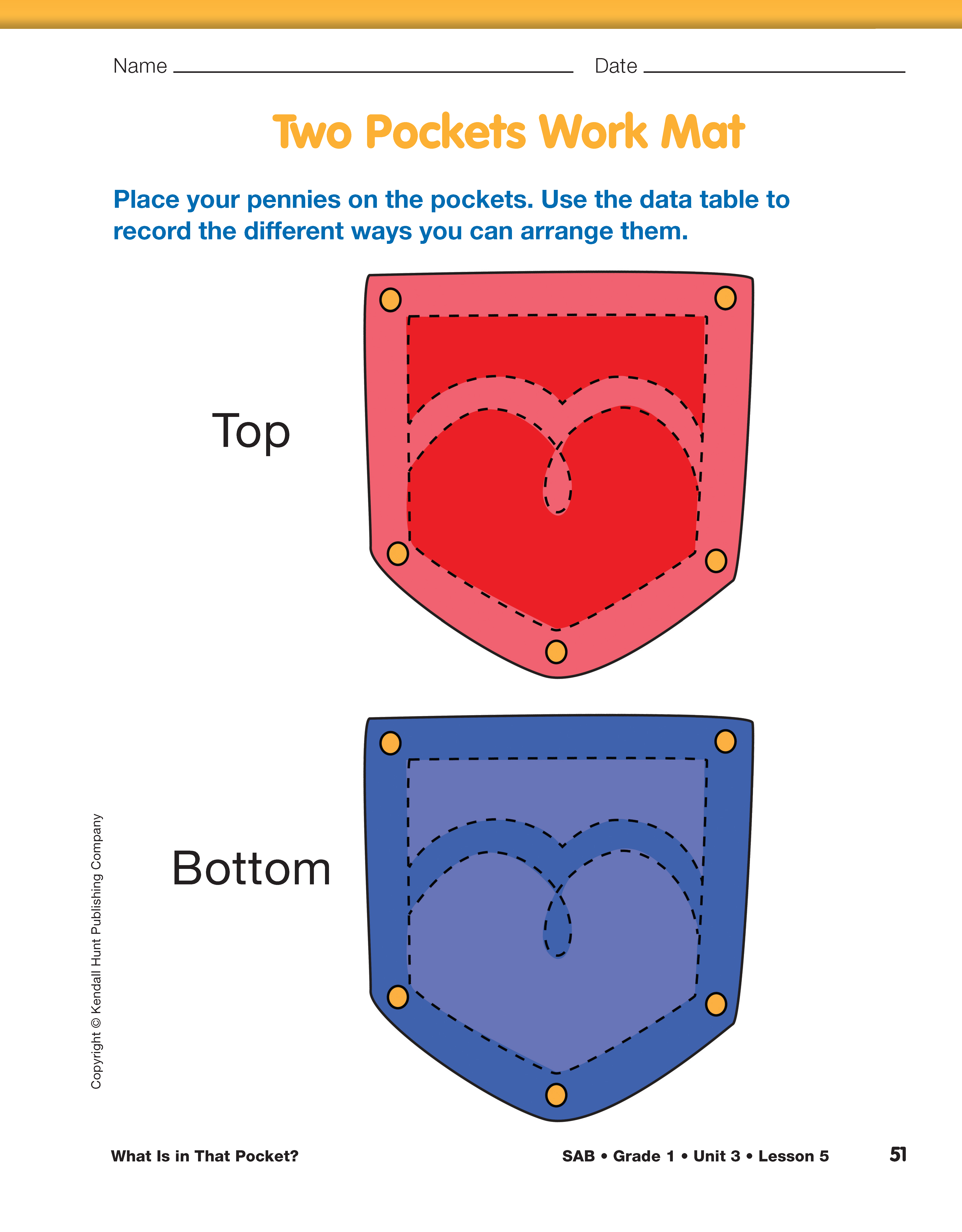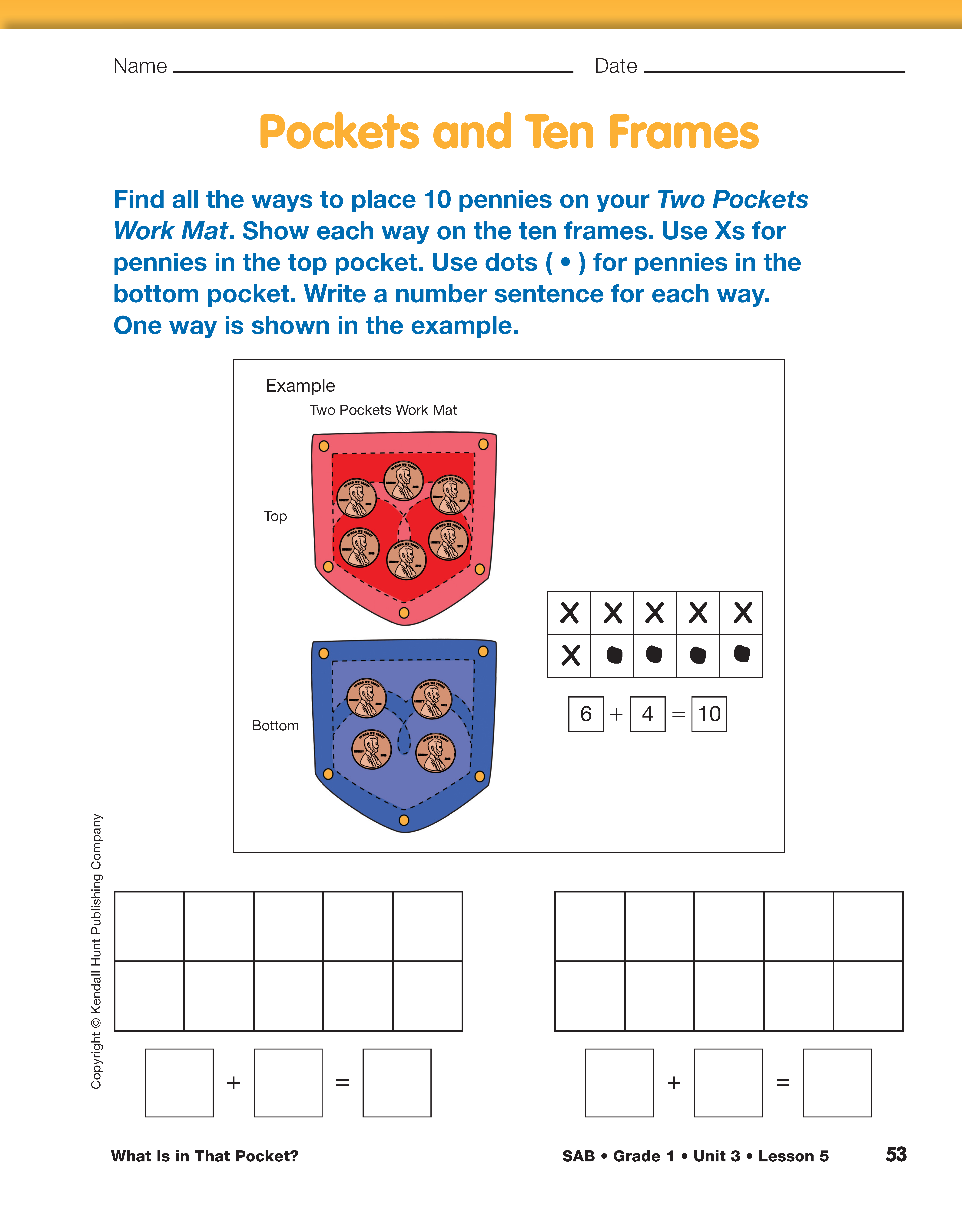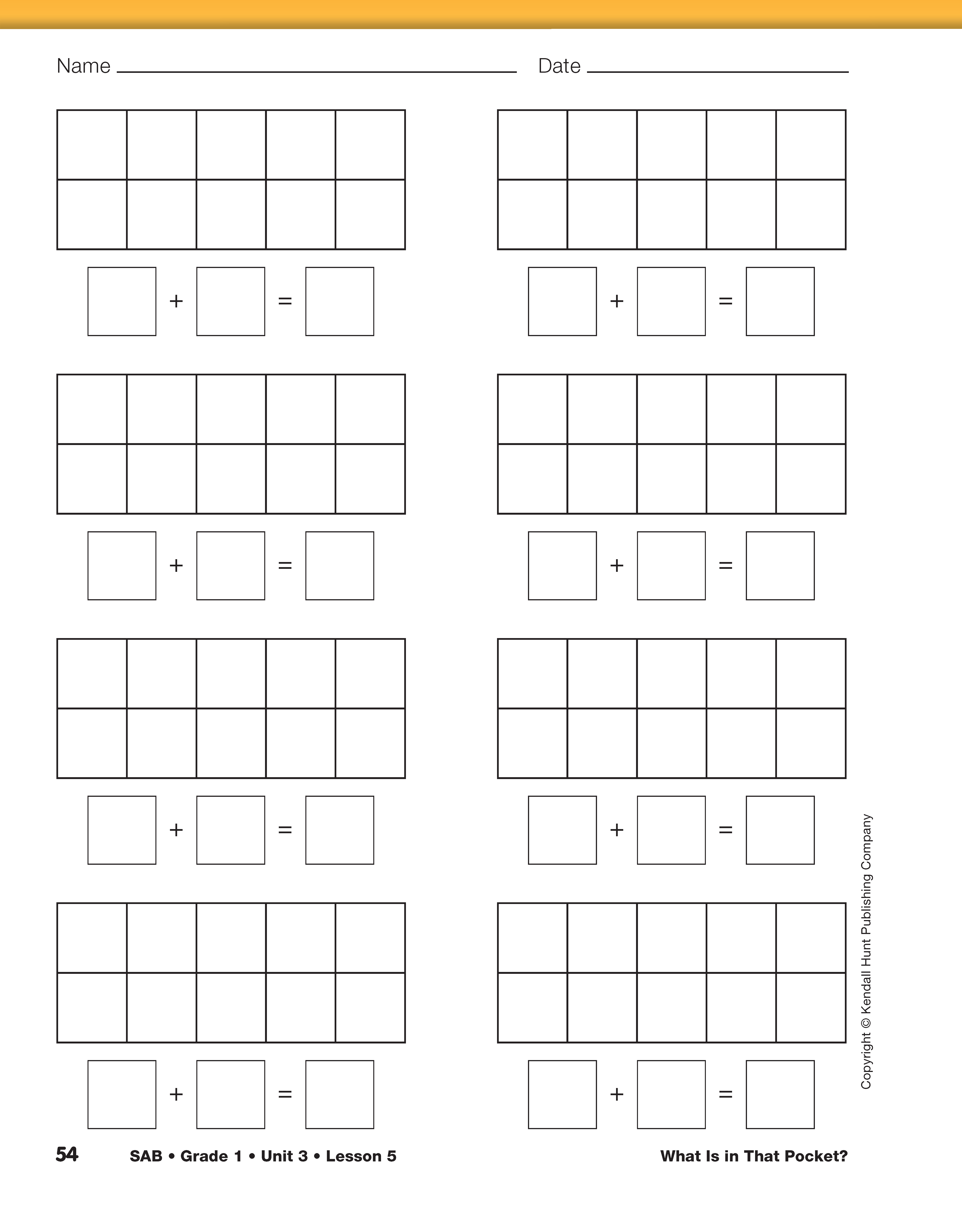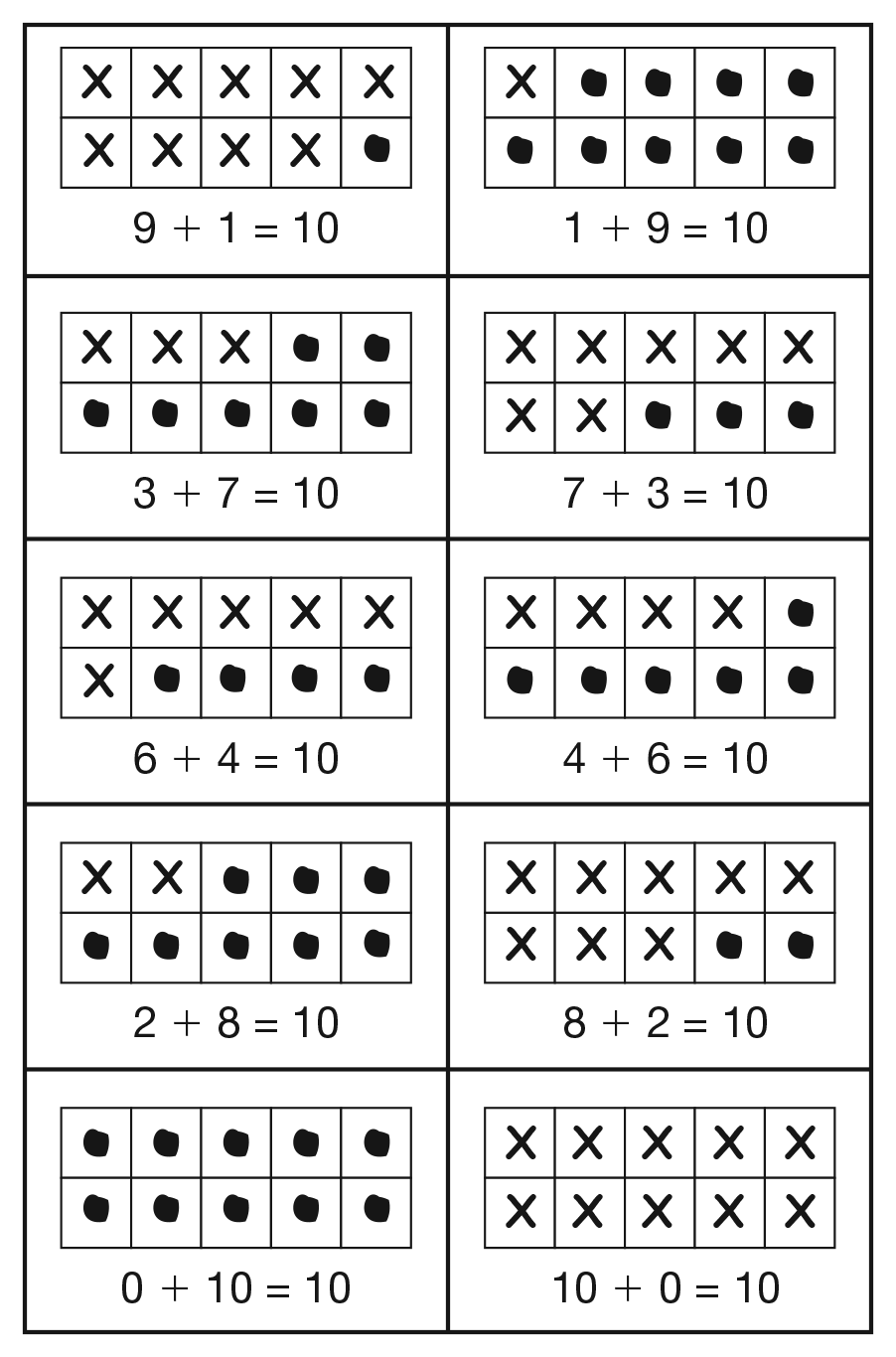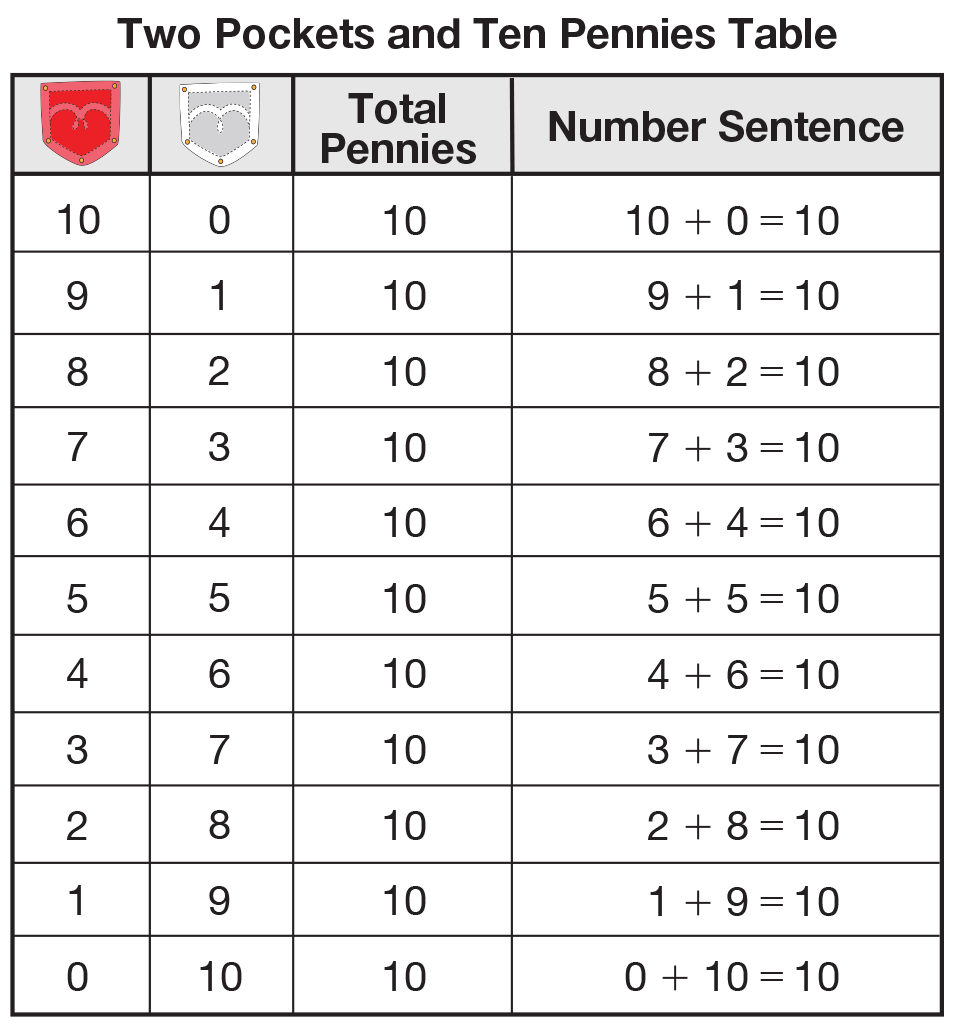What Is in That Pocket?
Est. Class Sessions: 3Developing the Lesson
Partition Ten into Two Parts. Display the Two Pockets Work Mat from the Student Activity Book. Distribute 10 pennies to each student. Tell students they are going to put their ten pennies into two pockets on their Two Pockets Work Mat in the Student Activity Book. See TIMS Tip. Place six pennies in the top pocket and four pennies in the bottom pocket as an example.
Ask:
Encourage students to show other ways to arrange the pennies and write corresponding number sentences. Since there is more than one way to solve this problem, tell them they will keep track of all the different ways on the Pockets and Ten Frames pages in the Student Activity Book. They will record the different solutions on ten frames and in number sentences as shown in the example.
Ask a student to display and share his or her solution. Students should record the solutions at their desks to practice filling in the ten frames.
Ask:
Come to an agreement that reversing the order of the pennies in the pockets (e.g., four pennies in the top and six in the bottom versus six pennies in the top and four in the bottom) creates two different solutions.
Ask:
Find How Many Ways. Have students work in pairs to find as many different ways as they can to arrange the ten pennies in the pockets and to record their solutions on the Pockets and Ten Frames pages. Students should follow the example and place Xs in the ten frame to represent the pennies in the top pocket and dots to represent those in the bottom pocket. When appropriate, challenge student pairs to see if they have all the possibilities. If necessary, remind students that putting zero pennies in the top pocket or zero pennies in the bottom pocket is a possibility.
Bring the class together and ask student pairs to share their solutions. Ask one student in the pair to place pennies in the pockets on the display and record their solution on a ten frame and in a number sentence. As each solution is presented, display the completed ten frame and number sentence in a place students can continue to review them as other combinations are shared. See the TIMS Tip. Before adding the ten frame to the display, ask students if the solution is a new arrangement and if the number sentence represents the arrangement.
Ask:
If it is a new solution, then post it with the other ten frames and number sentences. If it is a duplicate, post it in a different place labeled "Repeats." See Figure 1 for a collection of ten frames showing how a group of students organized the ten pennies. Note that 5 pennies in each pocket is missing from their collection. Also see the Sample Dialog.
Decide if all arrangements were found.
After students share their solutions, present this challenge:
Use the Sample Dialog to discuss ways to arrange ten pennies into two pockets. The dialog discusses the use of ten frames and patterns to find all solutions. Note that students agreed turn-around facts are different responses, recognized that zero is a partition of ten, and found an efficient strategy to organize information to determine whether all partitions have been found.
There are eleven possible solutions as shown in Figure 2. Use a display of the Two Pockets and Ten Pennies Table Master to reorganize the penny arrangements to help students decide if they have found all the possible arrangements. See Figure 3.
Referring to the ten frames, ask:















